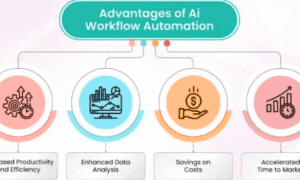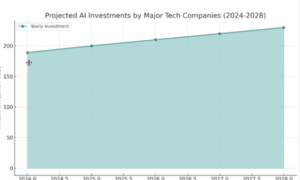In this modern era, Nishant Kapoor, a recognized expert in artificial intelligence and digital transformation, explores the impact of AI in Product Lifecycle Management (PLM) in his latest research, offering insights into future advancements. His insights shed light on how AI-driven technologies are revolutionizing product design, manufacturing, and operational efficiency across multiple industries, including healthcare and automotive sectors.
A New Era of Intelligent PLM
The evolution of PLM has transitioned from traditional document management to a sophisticated digital ecosystem with interconnected technologies. Today, AI-driven PLM solutions are redefining how industries develop, maintain, and enhance products by improving automation. The integration of cloud computing, machine learning, and predictive analytics has enabled organizations to streamline development cycles and optimize workflows, fostering more sustainable business models worldwide.
Machine Learning: Enhancing Predictive Analytics
Machine learning has become a critical element in modern PLM systems, offering data-driven decision-making capabilities for industries worldwide. Organizations implementing AI-based predictive analytics have reported improvements in efficiency, lowering operational risks considerably. AI-powered models analyze vast amounts of historical and real-time data, allowing businesses to optimize product development, improve quality control, and reduce errors through automation.
Natural Language Processing: Streamlining Documentation
Natural Language Processing (NLP) is transforming knowledge management within PLM systems, making information retrieval seamless and intuitive. By integrating NLP, companies can automate document processing, significantly reducing the time spent searching for technical information, leading to increased productivity. AI-driven NLP enhances requirement management, document classification, and information retrieval, allowing engineers and developers to focus on innovation rather than administrative tasks, improving efficiency and collaboration.
Computer Vision: Revolutionizing Quality Control
AI-driven computer vision is another breakthrough in PLM, ensuring enhanced product inspections and reliability. By leveraging deep learning and image recognition, companies can conduct real-time quality inspections with exceptional accuracy and precision. Automated defect detection systems powered by AI help manufacturers reduce waste and improve production efficiency. Additionally, design similarity analysis ensures that organizations can optimize their product portfolios by identifying redundant designs and promoting reuse, fostering innovation and reducing unnecessary costs.
Digital Twin Technology: A Virtual Revolution
The integration of digital twin technology with AI-driven PLM systems enables companies to create highly detailed virtual representations of physical products, improving predictive accuracy. This technology allows organizations to simulate, test, and optimize product performance before actual manufacturing begins, reducing development costs. The ability to predict real-world performance through virtual simulations reduces costs and enhances product reliability by eliminating design flaws early, thus increasing profitability.
The Importance of Data Architecture in AI-Powered PLM
A robust data architecture is essential for AI-powered PLM solutions, supporting automation systems. Cloud-native architectures, microservices, and API-driven integration have become industry standards, ensuring scalable and seamless data management. AI models require structured and unstructured data to function optimally, emphasizing the need for efficient data federation and real-time synchronization for high-performance results, improving operational productivity and security.
Overcoming Implementation Challenges
Despite its benefits, AI-powered PLM adoption presents challenges requiring proactive strategies and technical expertise. Ensuring data consistency, integrating AI with legacy systems, and managing real-time processing demands require a strategic approach with tailored solutions. Organizations must invest in data governance, employee training, and process reengineering to maximize AI’s potential. Furthermore, stakeholder alignment and change management play crucial roles in AI implementation, ensuring smooth transitions and sustainability.
The Future of AI in PLM
The future of PLM is centered around AI-driven knowledge-based engineering and enhanced decision-making frameworks, enabling smarter operations. Semantic web technologies and ontology-based systems will further improve knowledge management, enabling smarter and more adaptive PLM solutions. The integration of AI in sustainability efforts, supply chain optimization, and augmented reality-based product visualization is expected to drive further advancements in the field, revolutionizing workflows for improved sustainability measures.
In conclusion, the transformation of PLM through AI integration is reshaping the way businesses approach product development and lifecycle management. By leveraging machine learning, NLP, computer vision, and digital twin technology, organizations can achieve unprecedented levels of efficiency and innovation through automation solutions. Nishant Kapoor’s insights highlight the vast potential of AI in creating more intelligent, adaptive, and sustainable PLM systems, paving the way for a new era of technological advancements, boosting productivity and digital transformation.



































